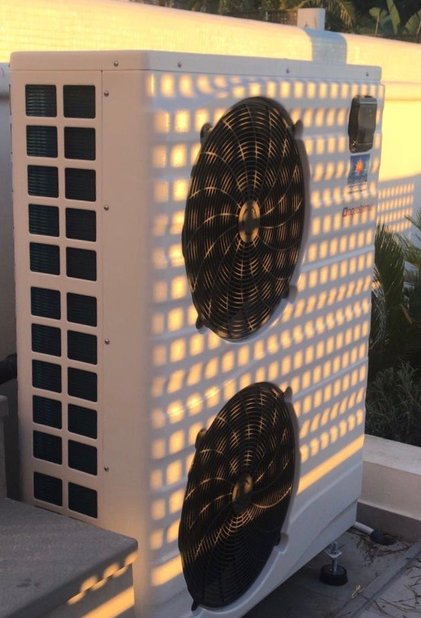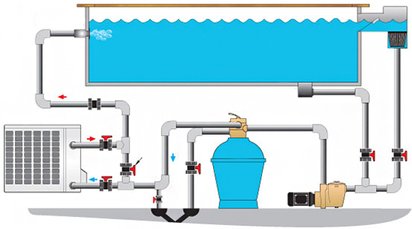
It has never been more economical to heat a swimming pool since the rise of the heat pump. This type of pool heating draws no less than 80% of its energy from the air, which makes the efficiency very attractive.
Operation of the heat pump
A heat pump based on air and water (air-water heat pump) is usually chosen for heating swimming pools. With this type of heat pump, the heat from the ambient air is used to heat the water. This is done via a heat exchanger. Thanks to a heat pump, you can heat the water to a pleasant wind chill at fairly low temperatures.
A heat pump consumes on average up to four times less energy than conventional swimming pool heating. This saving is the result of the temperature difference between the heat source (the ambient air) and the climate system. The smaller this difference, the higher the yield one obtains. In swimming pools, the pump must only deliver a relatively low temperature, which is why using a heat pump is so interesting in this situation.
Efficiency depending on the ambient temperature
In outdoor swimming pools (open air pools), the heat pump achieves its highest efficiency at outdoor temperatures between 10 ° C and 25 ° C. Above 25 ° C, additional heating is usually not required. And below 10 ° C, it is too cold for most of us to go for a swim outside. A comfortable temperature for swimming fluctuates between 25 ° C and 30 ° C according to personal preferences.

In terms of efficiency, the heat pump is the cheapest type of pool heating after solar collectors. In contrast to solar collectors, a heat pump will work 24 hours a day. Solar collectors only work when there is enough sun and will therefore not produce hot water during the night or drizzly days. As a result, the temperature of the pool water can fluctuate greatly.
COP value
It is the so-called COP value (Coefficient Of Performance) that indicates the ratio between the absorbed and the delivered power. A heat pump with a power of 2 kW that delivers a power of 10 kW therefore has a COP value of 5. In this example, a single kW of electricity delivers 5 kW of heat in the swimming pool! When assessing the COP value, make sure that you compare apples with pears. After all, the COP value of a heat pump is always specified at a certain air temperature and humidity. If you want to compare two different pumps, it is therefore best to coordinate these data first.

COPYRIGHT © ALLE RECHTEN VOORBEHOUDEN G.Vanhoyweghen